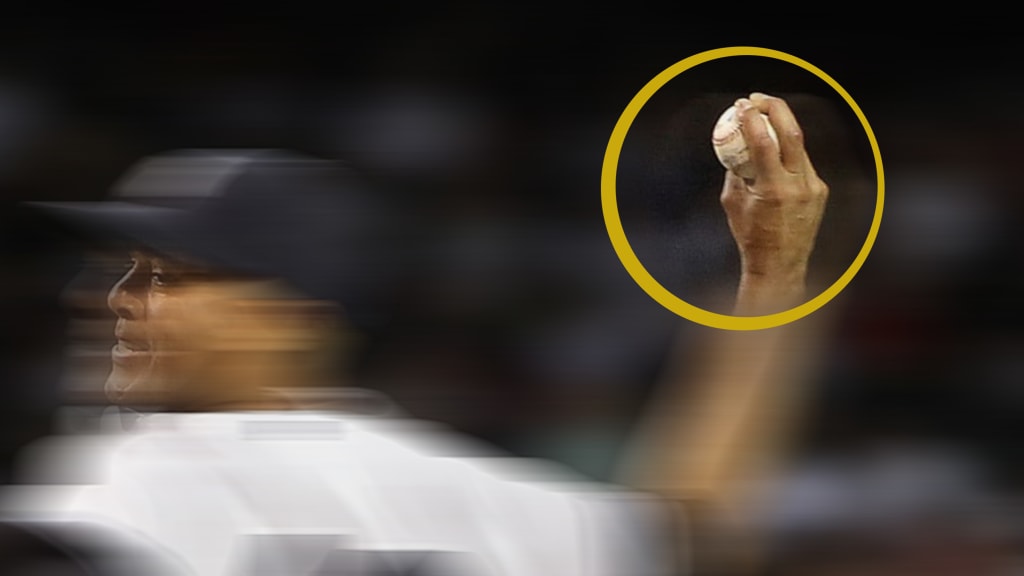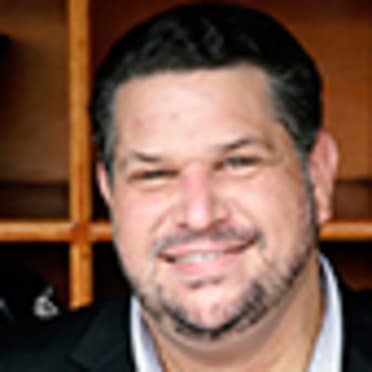
It’s considered by many to be the greatest pitch in baseball history, yet Mariano Rivera’s famous cut fastball initially might have led to the end of his career before it ever really took off.
MLB.com’s Full Account takes a deep dive into Rivera’s life, including the sudden appearance of his cutter in 1997 -- and how it helped him become the most dominant relief pitcher of all time.
Listening to Rivera talk about his cutter’s unannounced arrival, it’s clear that the pitch’s initial unpredictability scared him quite a bit.
Rivera had been the Yankees’ closer for two months in 1997 when he and teammate Ramiro Mendoza took the field one day for their daily catch. Rivera unleashed a throw to Mendoza, who was caught off guard by the ball’s late movement. Mendoza told Rivera to stop playing around, but Rivera wasn’t playing.
Rivera insisted that he was just throwing the way he always had, only the ball wouldn’t stay straight. Mendoza watched a few more throws echo the same movement, making it difficult to catch the ball. He decided the catch was over; Mendoza was afraid he would get hurt.
Mendoza wasn’t the only one intimidated by the pitch.
“I was petrified,” Rivera said. “Closers, they have to know exactly where the ball is going, where you're throwing the pitch, what the ball is doing, and be in control of that. I wasn't in control of that. I had no control of the pitch.”
Rivera -- who had relied primarily on a four-seam fastball and a slider to that point in his career -- enlisted the help of pitching coach Mel Stottlemyre and bullpen coach Mike Borzello, the trio arriving early to Tiger Stadium, prior to the Yankees’ game that night against Detroit.
“We don't want the ball to move; again, it's no control,” Rivera said. “We did everything within our power and our knowledge. Mel is telling me, ‘Mariano, do it like this and this ball should never move; it will go straight.’ As soon as I throw it, it was even harder. It moved even more.”
Later that evening, Joe Girardi -- Rivera’s catcher at the time, not yet his manager -- walked out to the mound after the closer unleashed his first few pitches.
“He comes to the mound -- ‘Throw the ball straight,’” Rivera said. “I said, ‘Man, I’m throwing it straight, Joe, but I don’t know what's happening. Catch the ball because I don’t know where the ball is going.’”
It makes sense that Rivera would be concerned about his sudden loss of fastball command. It’s easy to forget, but 1996 was arguably the most dominant season of his career. While pitching without his cutter, Rivera finished third in the American League Cy Young Award voting while posting a 2.09 ERA in 107 2/3 innings, with a career high in WAR (both FanGraphs and Baseball Reference versions) and strikeout rate (30.6%).
Of course, Rivera learned to command the cutter, turning it into the bread and butter of a Hall of Fame career. Yet even after he had thrived with the pitch for a year or two, there were people advising him to fine-tune some other pitches. He couldn’t possibly rely on one pitch for an entire career, could he?
“A wise man told me this once -- his name is Whitey Ford,” Rivera remembered. “He says, ‘Mariano, don’t try to change the ways that you get someone out. Even if you got it out for 20 times this same way, do not try to change it. Make him adjust it. Make him adjust his ways. Because if he doesn’t, why are you going to change it?’ That stuck in my brain, and in my soul, and in my heart, like I remember today. Why did I have to change something that is working? Why?
“From that moment to the moment that I retire, I threw the same pitch.”
For more on Rivera’s cutter and his early years in the Majors, check out Episode 3 of MLB.com’s Full Account podcast series on the life of the Yankees’ Hall of Famer.
